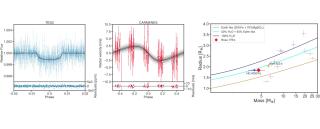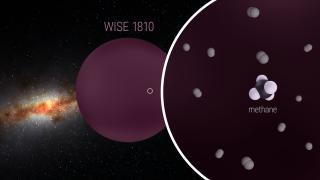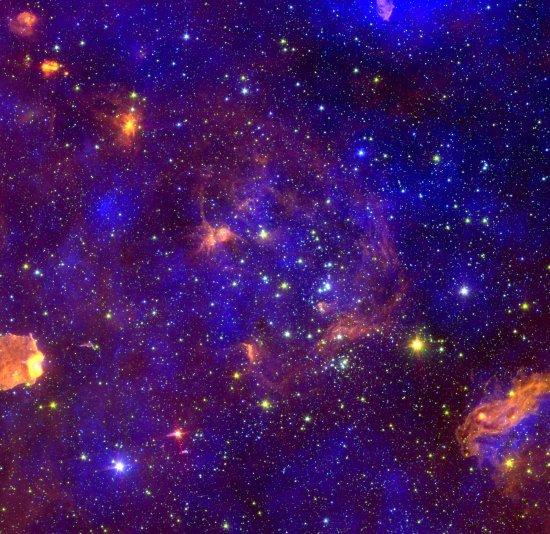In order to fully understand the gravitational collapse of molecular clouds, the star formation process, and the evolution of circumstellar disks, these phenomena must be studied in different Galactic environments with a range of stellar contents and positions in the Galaxy. The young massive association Cygnus OB2, in the Cygnus-X region, is a unique target to study how star formation and the evolution of circumstellar disks proceed in the presence of a large number of massive stars. We present a catalog obtained with recent optical observations in the r, i, z filters with OSIRIS, mounted on the 10.4 m Gran Telescopio CANARIAS telescope, which is the deepest optical catalog of Cyg OB2 to date. The catalog consists of 64,157 sources down to M = 0.15 M ☉ at the adopted distance and age of Cyg OB2. A total of 38,300 sources have good photometry in all three bands. We combined the optical catalog with existing X-ray data of this region, in order to define the cluster locus in the optical diagrams. The cluster locus in the r – i versus i – z diagram is compatible with an extinction of the optically selected cluster members in the 2.64 m < AV < 5.57 m range. We derive an extinction map of the region, finding a median value of AV = 4.33 m in the center of the association, decreasing toward the northwest. In the color-magnitude diagrams, the shape of the distribution of main-sequence stars is compatible with the presence of an obscuring cloud in the foreground ~850 ± 25 pc from the Sun.
Advertised on
References
2012 ApJS, 202, 19
It may interest you
-
 Measuring galaxy sizes is essential for understanding how they were formed and evolved across time. However, traditional methods based on l ight concentration or isophotal densities often lack a clear physical meaning. A recent study from Trujillo+20 explores a more physically motivated definition: the radius R 1, where the stellar surface density falls to 1 solar masses per parsec square —roughly the threshold for gas to form stars in galaxies like the Milky Way. In this work, Arjona-Gálvez+25 uses over 1,000 galaxies from several state-of-the-art cosmological simulations (AURIGA, HESTIAAdvertised on
Measuring galaxy sizes is essential for understanding how they were formed and evolved across time. However, traditional methods based on l ight concentration or isophotal densities often lack a clear physical meaning. A recent study from Trujillo+20 explores a more physically motivated definition: the radius R 1, where the stellar surface density falls to 1 solar masses per parsec square —roughly the threshold for gas to form stars in galaxies like the Milky Way. In this work, Arjona-Gálvez+25 uses over 1,000 galaxies from several state-of-the-art cosmological simulations (AURIGA, HESTIAAdvertised on -
 The TESS (Transiting Exoplanet Survey Satellite) mission has discovered many exoplanet candidates that need to be confirmed and characterized from the ground. One of them orbits Ross 176, a K-type dwarf star, where we have identified a promising hot “water-world” candidate. Using spectroscopic observations with the CARMENES instrument, we confirmed the planetary nature of the signal detected by TESS and estimated the planet’s mass. To improve the analysis, we applied an advanced statistical method called Gaussian Process, which allowed us to separate the star’s own variability (quite strongAdvertised on
The TESS (Transiting Exoplanet Survey Satellite) mission has discovered many exoplanet candidates that need to be confirmed and characterized from the ground. One of them orbits Ross 176, a K-type dwarf star, where we have identified a promising hot “water-world” candidate. Using spectroscopic observations with the CARMENES instrument, we confirmed the planetary nature of the signal detected by TESS and estimated the planet’s mass. To improve the analysis, we applied an advanced statistical method called Gaussian Process, which allowed us to separate the star’s own variability (quite strongAdvertised on -
 WISEA J181006.18-101000.5 (WISE1810) is the nearest metal-poor ultracool dwarf to the Sun. It has a low effective temperature and has been classified as an extreme early-T subdwarf. However, methane--the characteristic molecule of the spectral class T--was not detected in the previous low-resolution spectrum. Constraining the metallicity--the abundance of elements heavier than helium-- of these cold objects has been a challenge. Using the 10.4 m Gran Telescopio Canarias, the largest optical-infrared telescope in the world, we collected a high-quality near-infrared intermediate-resolutionAdvertised on
WISEA J181006.18-101000.5 (WISE1810) is the nearest metal-poor ultracool dwarf to the Sun. It has a low effective temperature and has been classified as an extreme early-T subdwarf. However, methane--the characteristic molecule of the spectral class T--was not detected in the previous low-resolution spectrum. Constraining the metallicity--the abundance of elements heavier than helium-- of these cold objects has been a challenge. Using the 10.4 m Gran Telescopio Canarias, the largest optical-infrared telescope in the world, we collected a high-quality near-infrared intermediate-resolutionAdvertised on
